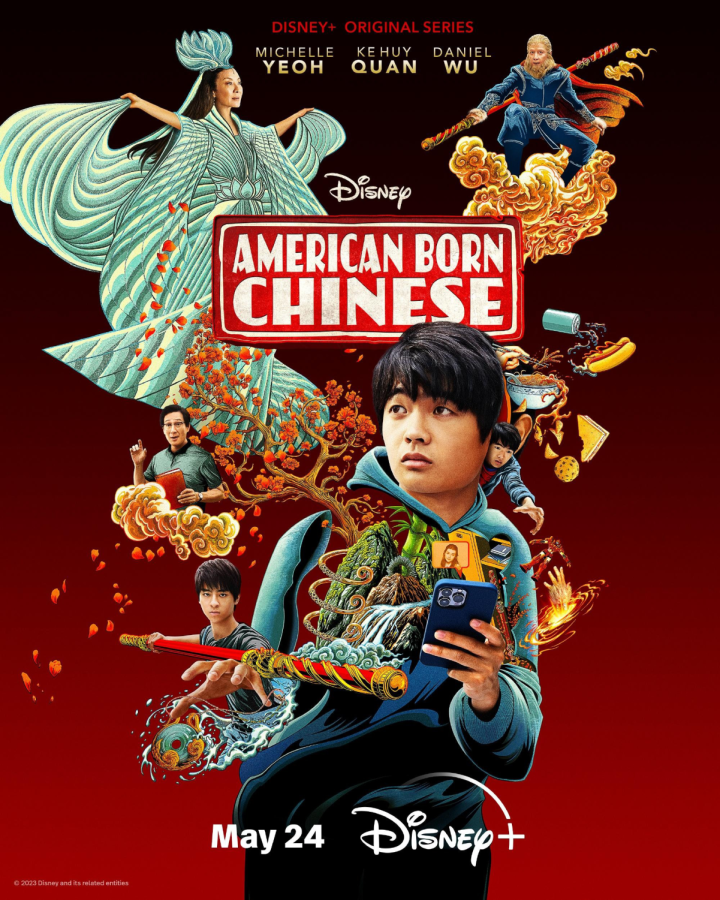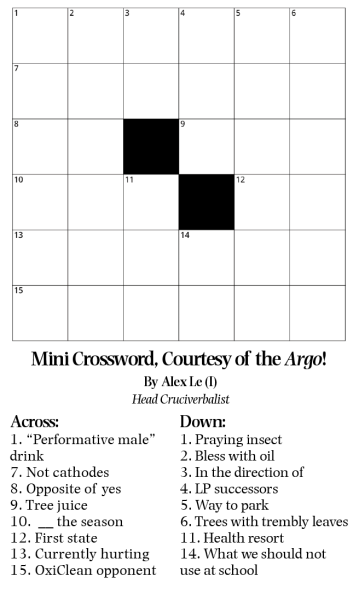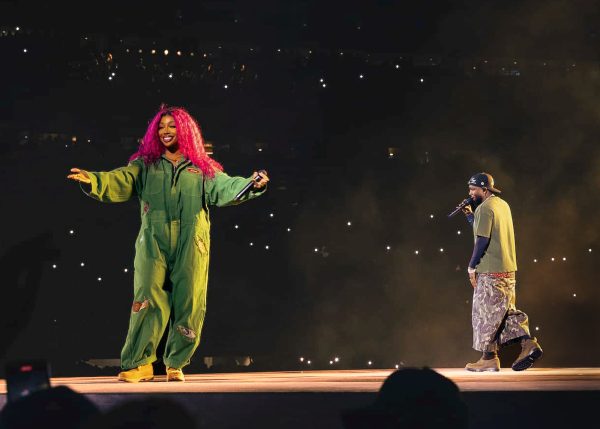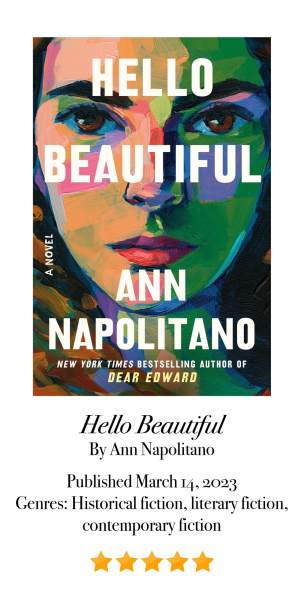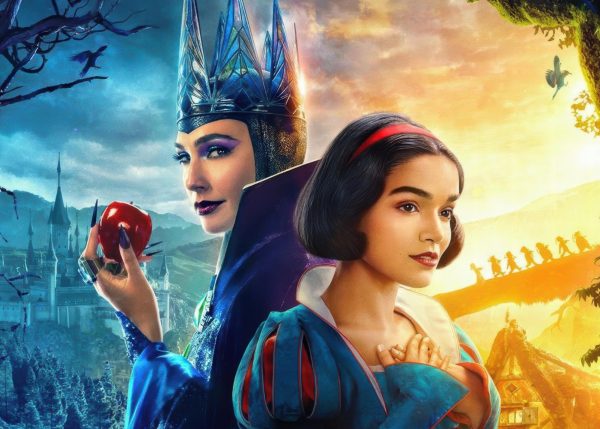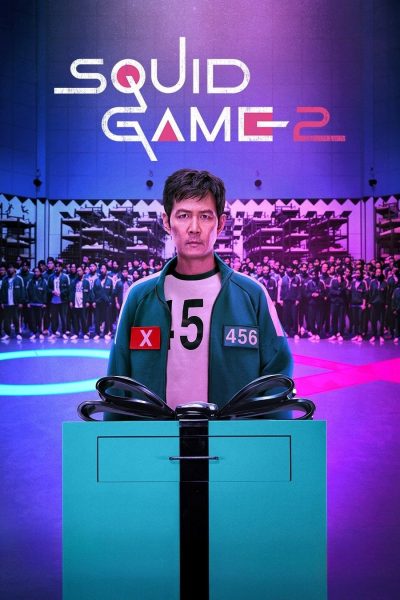American Born Chinese Is Reborn
Disney+ released its highly anticipated TV show, American Born Chinese, just in time for the end of Asian American Pacific Islander Heritage Month this May. Based on Gene Luen Yang’s 2006 graphic novel, the show stars Ben Wang, playing Jin Wang, and Jimmy Liu, acting as Wei-Chen. The show features a predominantly Asian cast with actors including Michelle Yeoh and Ke Huy Quan, and Yang as the executive producer.
The series follows Jin Wang, a young Chinese American boy who experiences the challenges of fitting in at school while grappling with his identity.
Jin is forced to befriend Wei-Chen, a new student from Taiwan. From the moment they meet, worlds collide and Jin finds himself entangled in a war of gods. The eight-episode series depicts Jin and Wei-Chen’s journey together on a quest to stop the war happening in the Heavens. The show stays true to Chinese culture and folklore, with mythical elements based on the folk tales found in the classic novel Journey to the West by Wu Cheng’en, published during the Ming dynasty.
Despite its lighthearted nature as an action comedy, American Born Chinese tackles serious topics such as identity and self-doubt. The task of introducing said themes to young audiences, although not easy, is important. In an interview with Entertainment Weekly, Yang reflects, “telling stories about Asian Americans is a way of telling Asian Americans that their lives are worthy of story, that they’re three-dimensional characters, that what they go through is important.”
The idea of accurate representation in the media is not a new concept. William Liang (III) explains, “Media is a significantly powerful political platform that can influence a false representation [of] specific people. […] Take quarantine, for example, [when] Asians were stereotyped all over the media.” Similar to the 2018 release of Black Panther, the first superhero movie with a predominantly Black cast, American Born Chinese has the potential to be impactful for young audiences who are not usually represented in television. “Social media is able to transform views on people,” says Liang.
Boston Latin School’s English Department introduced the graphic novel to the seventh grade curriculum in 2021. “When they’re coming into seventh grade, it is like they’re coming into a new world. This idea of seeing something similar [to you] and seeing your own experience reflected in a novel definitely allows people to connect with it,” says BLS English teacher Ms. Keri Orellana.
A fan of the novel, Ian Sturke (VI) watched the show in hopes that it would be similar to the book. “I’m a visual learner,” Sturke says. “I like having it as a graphic novel better than reading it. […] It was like watching a movie. It was kinda [like the book].”
The complexity of American Born Chinese is exigent. Telling multiple stories at once, the series was forced to modify itself to honor the text-to-television pipeline. Certain aspects of the graphic novel, such as the character of cousin Chin-Kee, would not translate well into a show or any live-action medium.
The novel maintains an aspect of ambiguity, representing hardships in different ways, which a viewer of the show could unfortunately misconstrue. The series does, however, do a fantastic job of preserving the essence of the story; it feels like a perfect interpretation given the change of time and culture.
Overall, American Born Chinese is a great addition to the growing list of media highlighting Asian-American experiences. All eight episodes are available to stream on Disney+ now!



